Fast Facts on AI Evaluations Ecosystems
-
An AI evaluations ecosystem is the coordinated set of tools, processes, and stakeholders that continuously assess systems from build to production to ensure safety, reliability, and accountability.
-
Core output includes measurable criteria, strong data pipelines, adversarial and functional testing, live monitoring for drift/hallucination/security, and maintenance tied to performance thresholds.
-
Enterprises get faster go/no-go decisions, fewer rollbacks, and stronger compliance footing when internal practices mirror NIST resources, standard benchmarks, and structured testbeds.
-
Why now: policy deadlines, active enforcement, and visible model regressions create immediate risk; hard evidence is the best way to prove reliability for launches and audits.
What is an AI Evaluations Ecosystem
An AI evaluations ecosystem represents a structured network for assessing AI systems across their entire lifecycle. Evaluation means measurement and testing; governance is the policy and decisions based on that measured evidence. It includes technical methods, institutional GenAI evaluation frameworks, and operational practices to ensure AI performs as intended in real-world settings. Unlike isolated benchmarks, it integrates continuous testing, deployment monitoring, and long-term impact analysis.
Evaluations must produce actionable, documented evidence for stakeholders; governance then uses that evidence to make release, risk, and compliance decisions. This reporting loop creates transparency and supports risk mitigation without conflating measurement with oversight. It also significantly improves innovation and shared learning. These ecosystems create spaces where different stakeholders co-create solutions and disseminate best practices across domains.
Core Components of the Ecosystem
The generative AI ecosystem is built on interconnected components that work together to enable secure, scalable, and effective adoption across the enterprise.
Evaluation Objectives and Criteria
Clear objectives define the scope of evaluation and guide all subsequent testing. Criteria may include groundedness, security, resilience, and demographic fairness, each mapped to measurable KPIs. The NIST AI RMF defines main trustworthiness characteristics, like security, resilience, fairness, and explainability, that should be measured with both qualitative and quantitative criteria in realistic deployment settings.
Data Infrastructure and Quality
The ecosystem depends on datasets that are accurate, representative, and current. Poor data quality leads to poor AI reliability metrics and misleading performance scores. Data pipelines must include validation layers to detect bias, imbalance, or drift before evaluation begins.
Model Development and Testing
Modern pipelines must test models with automated adversarial attacks that report measurable attack-success rates, not just pass/fail. One peer-reviewed study from 2025 shows very high attack success ratesagainst state-of-the-art models: the paper reports up to 100% attack success on multiple leading LLMs using simple adaptive jailbreaks, including GPT-4o and Claude 3.5 (v4 results).
Deployment and Integration
Evaluation does not stop at launch; it continues through live operations. Integration phases should test whether models perform under real workloads without triggering operational disruptions. Metrics at this stage often include latency, throughput, and incident response times. Deployment evaluations also reveal how AI interacts with existing enterprise systems and human operators.
Continuous Monitoring and Maintenance
AI performance changes as data and context shifts. This is known as drift, and it degrades accuracy if you do not detect and respond in time. A 2024 study shows drift is routine in real streams, and it recommends continuous monitoring for unsupervised and supervised settings. Healthcare reviews reach the same conclusion. Drift types vary by cohort, workflow, and time, so monitoring must be ongoing and domain-aware.
Tools and Platforms
Use widely-recognized institutional resources first. NIST’s AI resources provide concrete actions and measurement guidance you can operationalize in development pipelines. The U.S. Department of Commerce enumerates 12 risks and 200+ actions you can map to internal evaluation checks. Production monitoring should include exfiltration and PII-exposure indicators, since USENIX Security has demonstrated the privacy risk of training-data extraction. For factual reliability, pair internal metrics with public LLM benchmarks. HaluEval provides repeatable tests and labeled sets for measuring and reducing hallucinations in deployed systems.
Why Evaluations Matter More Than Ever
With generative AI now influencing high-stakes business decisions, rigorous evaluations are critical for detecting risks, verifying performance claims, and proving compliance for a safe deployment.
White House Stance
Federal policy ties reliability to evidence. OMB M-25-21 requires minimum risk management practices for “high-impact AI.” Agencies must document implementation within 365 days, and they must be ready to report it. The memo requires independent review before risk acceptance, and authorizes termination of non-compliant AI. That makes evaluation a hard gate for federal use. It elevates the CAIO role and necessitates central tracking of high-impact use cases.
Regulators Eye Evaluations to Enforce Existing Laws
The EU AI Act embeds evaluation into law. Providers of high-risk AI must run post-market monitoring and maintain a documented plan. This is Article 72 in the final text. High-risk systems need logs that support traceability and tracking. Conformity assessments must be performed before going to market. These are recurring obligations, not one-off checks.
Enterprise Payoff
Evaluations speed internal trust, by enabling teams to make go/no-go calls with measurable evidence, not anecdotes. That shortens approval cycles. McKinsey reports rapid scaling of AI and genAI in 2024: 72% adopted AI in at least one function, and 65% used genAI regularly. Those deploying AI report cost decreases and revenue gains, butthe risk is real: notably, 23% report negative consequences from genAI inaccuracy.
Pillars of the Federal AI Evaluations Ecosystem
Since July 2024, NIST has published the GenAI Profile (AI 600-1) and maintained an AI RMF Playbook with actionable test templates and “Measure” actions that agencies can operationalize. CAISI/AISIC runs ongoing workshops and technical consortiums. DOE and NSF fund AI testbeds and related measurement programs. OMB M-25-21 and M-25-22 set evaluation-centric expectations for federal AI use and procurement. These are the pillars your enterprise can mirror.
|
Pillar |
Action-Plan Directive |
Enterprise Parallel |
|
NIST Guidelines & CAISI |
NIST publishes reusable evaluation resources for agencies: AI RMF 1.0, GenAI Profile (AI 600-1), and the AI RMF Playbook. CAISI/AISIC coordinates agency/industry collaboration, with public updates and workshops. |
Adopt NIST Playbook “Measure” checks as release gates; log results per model/version. |
|
Science of Measurement |
Federal focus on measurement science: NIST’s TEVV program provides testbeds, challenge problems, tools, and curated datasets; NSF funds metric/test-method R&D (AI-Ready Test Beds with planning and awards); DOE publishes GenAI risk guidance for operators. |
Fund R&D in metrics; open-source internal eval scripts; contribute cases to public benchmarks. |
|
Bi-Annual Knowledge-Share |
CAISI/AISIC organizes agencies, labs, and academic institutions for knowledge-sharing and road-mapping (2024 plenary; 2025 technical workshops). Regular public posts document lessons learned and priorities. |
Hold semiannual internal AI-evaluation summits; publish minutes and owners. |
|
Secure Testbeds |
DOE operates AI testbeds at 7 National Labs, ranging from single processors to hundreds of nodes for reliability testing and application development. |
Run masked-data sandboxes; require complete pre-prod eval suites before go-live. |
|
NIST AI Consortium |
CAISI/AISIC helps members with continued skill growth and publishes work products, workshops, and inter-agency coordination updates. |
Join standards groups; align KPIs to NIST profiles for audit-ready evidence. |
Core Evaluation Dimensions Enterprises Should Track
Latency and throughput drive user experience and spend. Research shows significant, measurable gains from optimized runtimes. SGLang reports up to 6.4× higher throughput on complex programs via KV-cache reuse and structured decoding. Nexus reports 1.5-1.9× higher throughput than vLLM on single-GPU workloads as well as lower time-to-first-token.
Furthermore, reliability requires objective, repeatable tests. Hallucination remains quantifiable at non-trivial rates in public benchmarks. HaluEval measured about 19.5% hallucination in sampled ChatGPT responses on selected topics. HaluEval-Wild goes on to extend measurement to real user queries and categorizes error types for field realism.
Thirdly, security evaluation focuses on information exposure and attack success. Measure how often answers include restricted or out-of-scope content. Record prompt-injection and jailbreak attack success rates using red-team suites. NIST’s Generative AI Profile lists information security and privacy as explicit risks and ties them to pre- and post-deployment testing.
Regarding fairness as the other core evaluation dimension, it has standard, testable definitions. Demographic parity, equalized odds, and equality of opportunity capture different facets of group fairness. NIST SP-1270 documents systemic, statistical, and human bias sources and calls for measurement and mitigation methods.
5-Step Framework for Enterprise Evaluations Ecosystem (AI Action-Plan Aligned)
Effective generative AI oversight starts with a structured evaluation lifecycle that defines mission-driven AI reliability metrics, tests in safe environments, runs repeatable enterprise AI assessments, shares transparent results, and feeds insights back into governance to ensure reliability, security, and compliance.
1. Define Mission Metrics
Start from risk and mission, not from a generic checklist. Use the NIST AI RMF and the Playbook to select measurable outcomes tied to your context. Convert them into KPIs for reliability, security, fairness, and compliance. For genAI, include grounding, confabulation, and disclosure controls from the NIST Generative AI Profile. Rigorously document pass/fail thresholds and confidence intervals, and bind each KPI to a decision: ship, hold, or fix.
2. Stand-Up Testbeds
Create segmented environments that mirror production traffic and integrations. Use masked or synthetic data to evaluate privacy and leakage risks before live trials. Follow NIST guidance and align evaluation scenarios with risk registers. Reference national efforts: NIST profiles and DOE/NSF testbeds demonstrate structured, safe experimentation at scale. Capture all telemetry needed to score your KPIs, and only promote models that meet thresholds in the sandbox.
3. Run Structured Evaluations
Use replay sets from production prompts for realism. Add benchmark tasks for comparability and coverage. Include adversarial and fuzzing suites to probe prompt-injection and jailbreak exposure. Track drift by rerunning fixed suites over time and comparing distributions. Record accuracy, ASR, parity gaps, latency, and throughput for each build. Automate these runs in CI/CD pipelines so that regressions block the release.
4. Publish Results & Share Learnings
Treat evaluations like SRE postmortems. Publish dashboards and short write-ups with deltas versus the last release. Standardize templates so results are comparable across teams and quarters. Close each review with decisions and owners.
5. Feed Findings into Governance
Turn evaluation findings into concrete changes. Update prompt policies, retrieval filters, and allow/deny lists. Retrain or fine-tune when drift or fairness gaps exceed thresholds. Re-run pre-deployment suites after every change. Keep evidence packages aligned to the RMF Measure/Manage functions.
How Knostic Complements Your AI Evaluations Ecosystem
Knostic simulates real employee prompts using their actual permissions across tools like Copilot and Glean. It identifies where AI responses infer sensitive knowledge across Teams, OneDrive, and SharePoint. By modeling attacker behavior with the same credentials, it reveals actual inference-driven oversharing risks by role, project, and department.
It continuously monitors AI interactions to detect oversharing in real-time, building audit trails that show what knowledge was accessed, how it was inferred, and by whom. These insights drive policy recommendations and feed directly into DLP, RBAC, and Purview reviews to improve governance over time.
The platform visualizes user-role-data relationships and traces LLM inference paths back to source documents and policies. It shows if restricted content was synthesized, enabling board-level reporting and making governance decisions verifiable and repeatable.
Finally, Knostic integrates without code into Microsoft 365, Copilot, Glean, and custom LLM stacks. It supports pre-production testbeds with masked or synthetic data, producing rapid, actionable insights to validate AI behavior before rollout.
What’s Next
Download the Knostic LLM data governance white paper. It explains how to govern the knowledge layer during AI adoption, and how oversharing metrics, Knostic monitoring, and audit trails reduce risk.
FAQ
- What is the AI ecosystem?
The AI ecosystem is the set of models, tools, data sources, users, and policies that interact to produce and consume AI outputs. It includes foundation models, orchestration layers, and retrieval systems.
- Who are the actors in the AI ecosystem?
Security enforces least-privilege. Compliance and legal require controlled evidence. Privacy defines data handling. IT manages identity and infrastructure. Engineering owns features and SLAs. Data science tunes models. Risk and audit vet suppliers. Business sets goals and risk tolerance.
- How does Knostic Support AI Evaluations Ecosystems?
Knostic runs permission-aware simulations to surface oversharing before launch. It monitors live interactions to detect and record exposure in production. It provides audit trails for investigations and board reporting and recommends label and policy changes based on real AI outputs, not guesses.


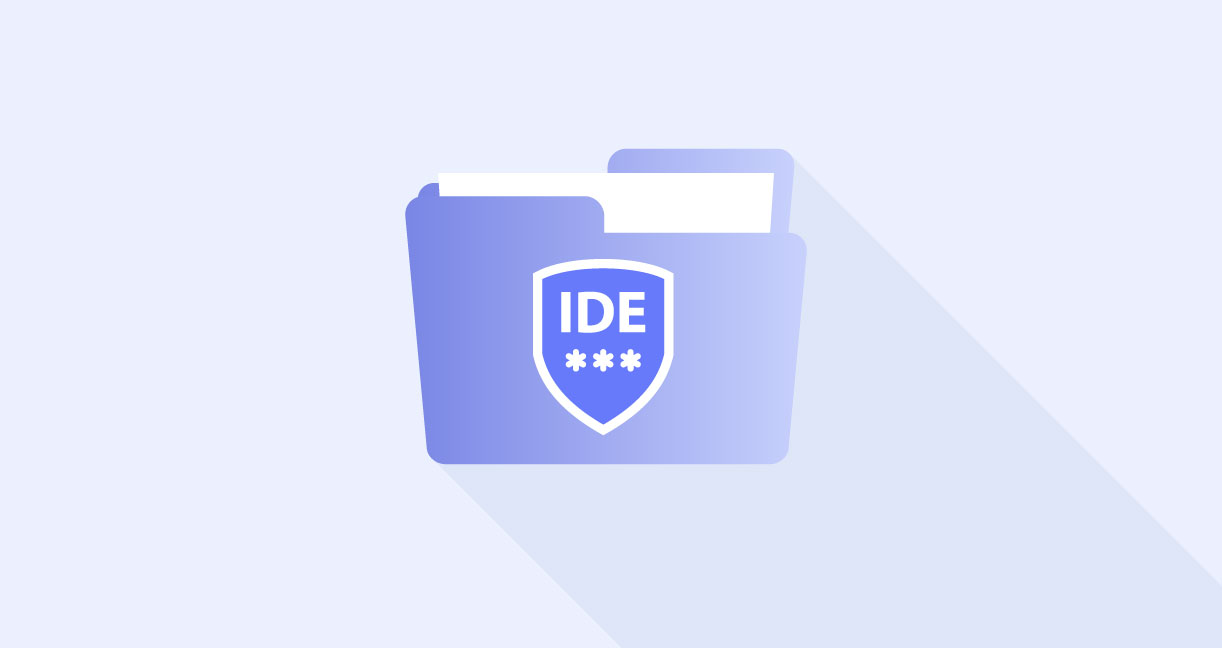



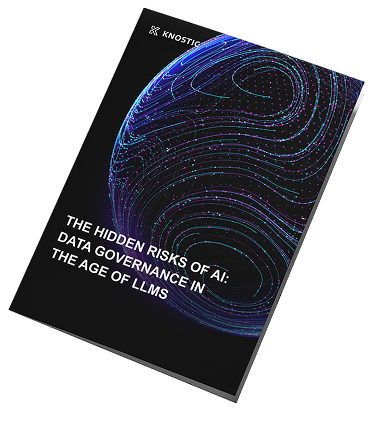
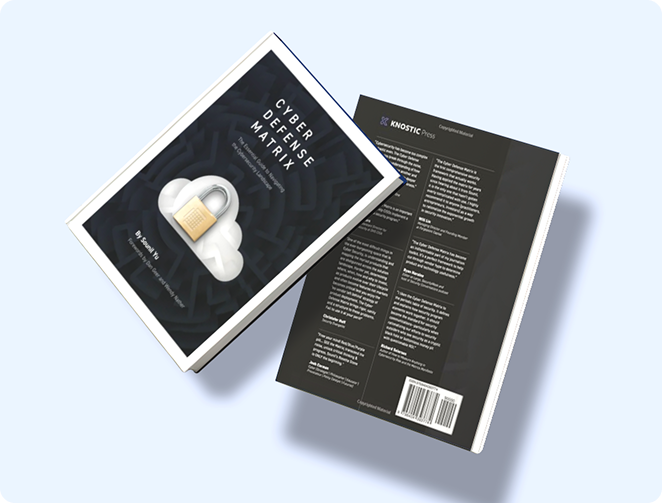
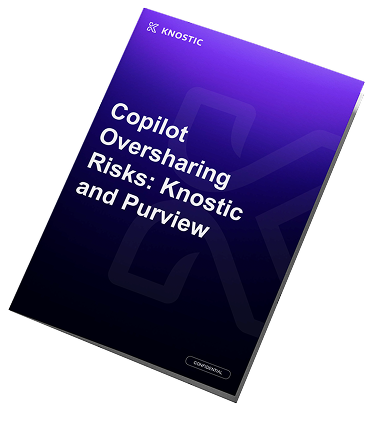
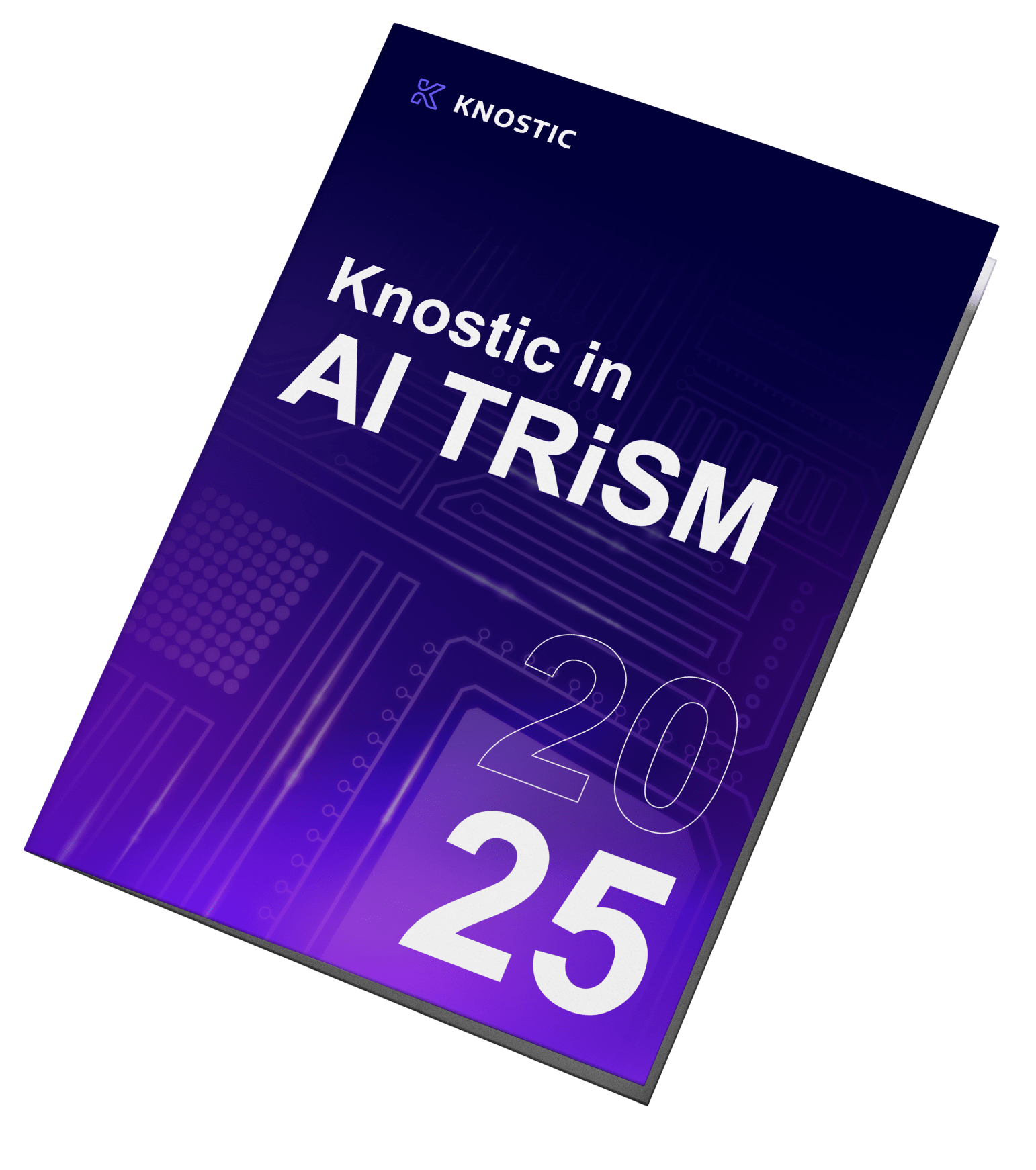
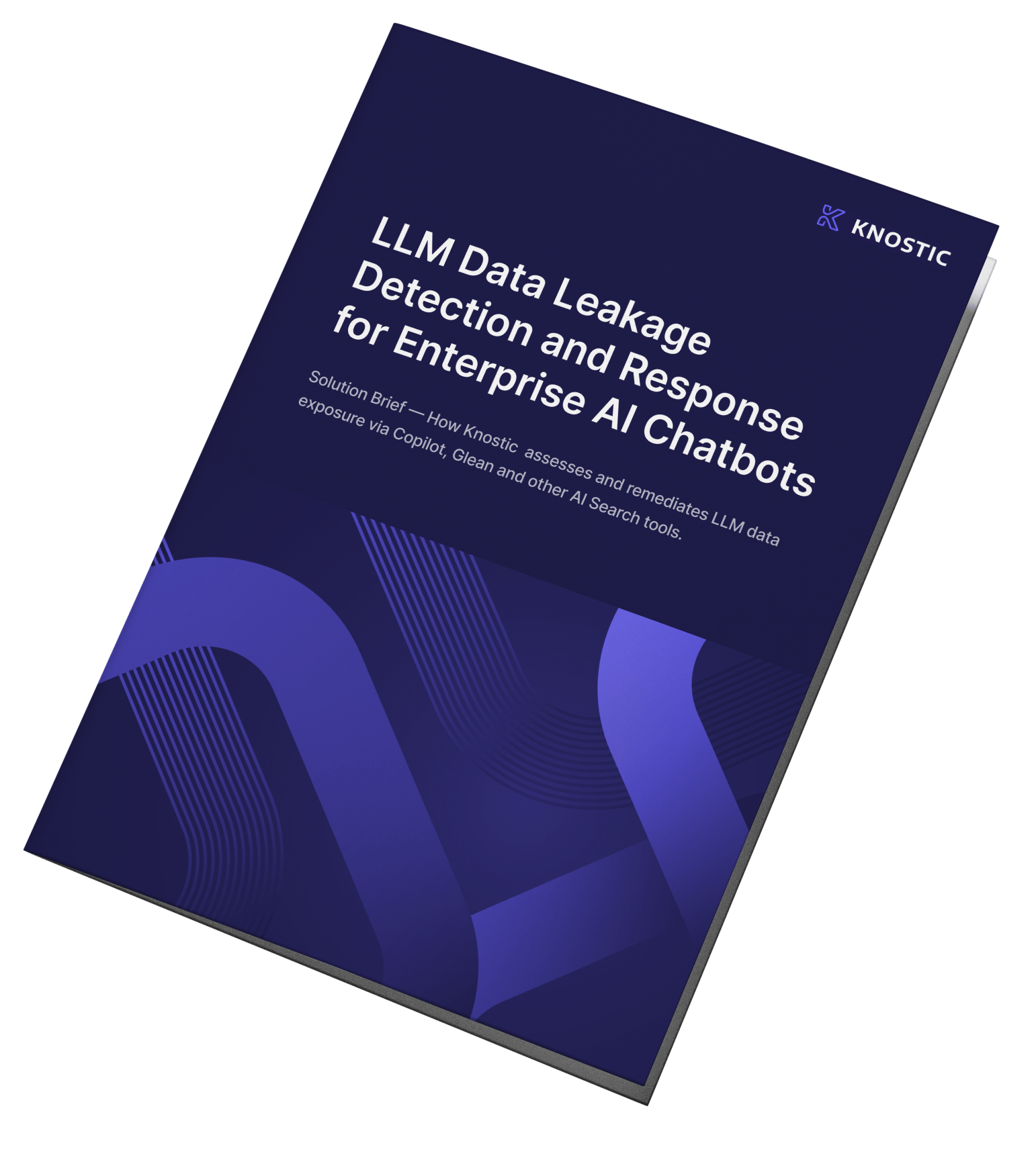
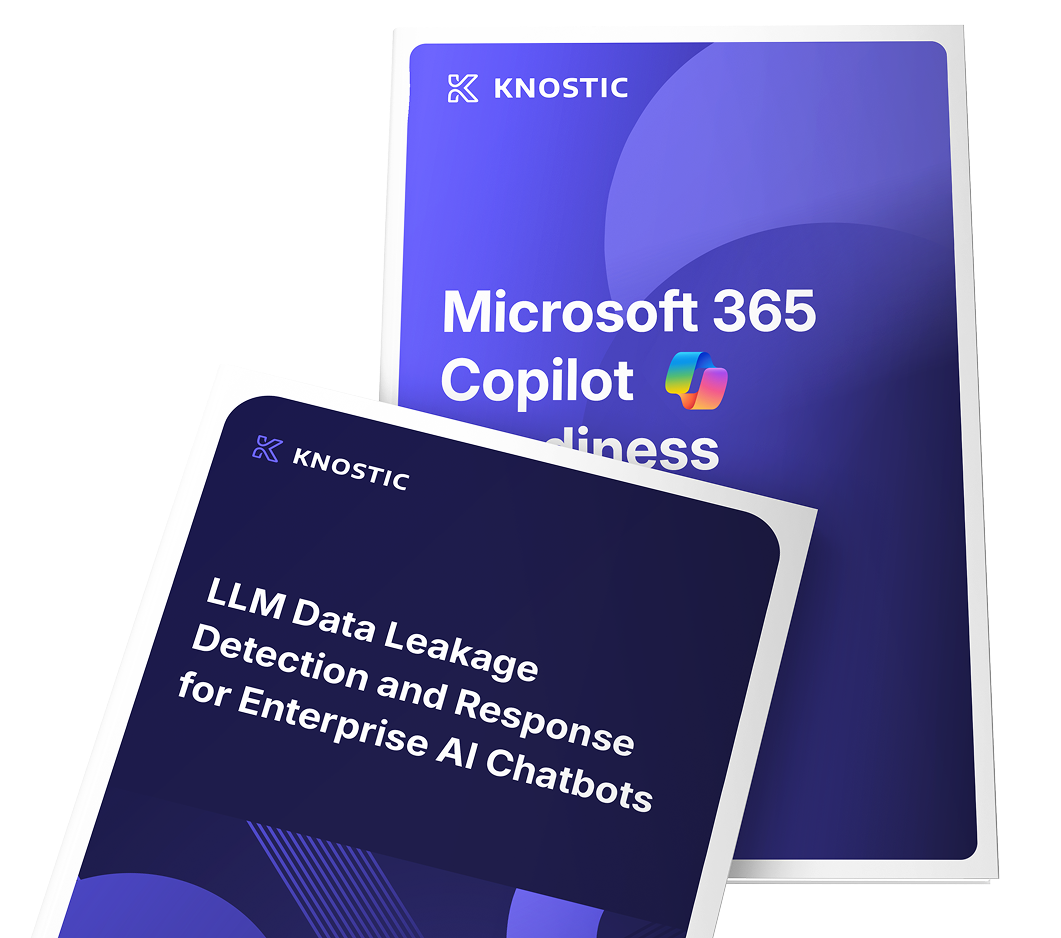
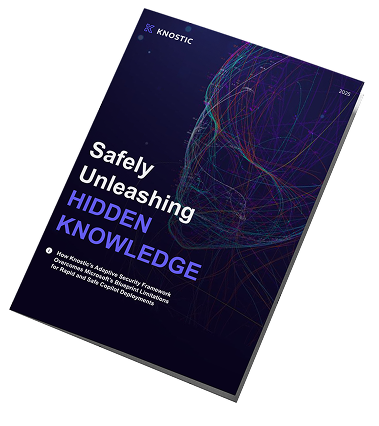
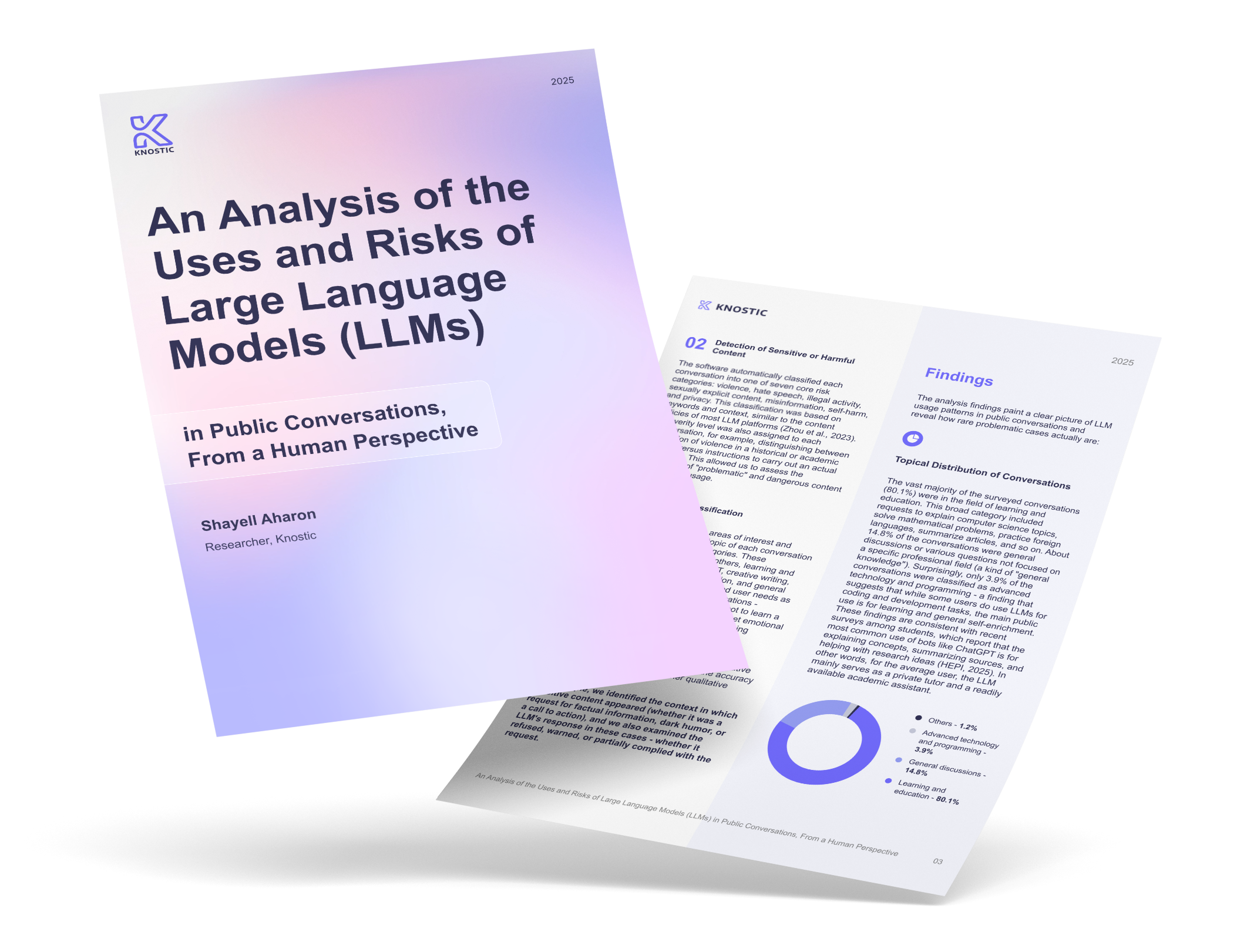




.png?width=520&height=294&name=Enterprise-AI-Adoption-(AI-Action-Plan).png)

